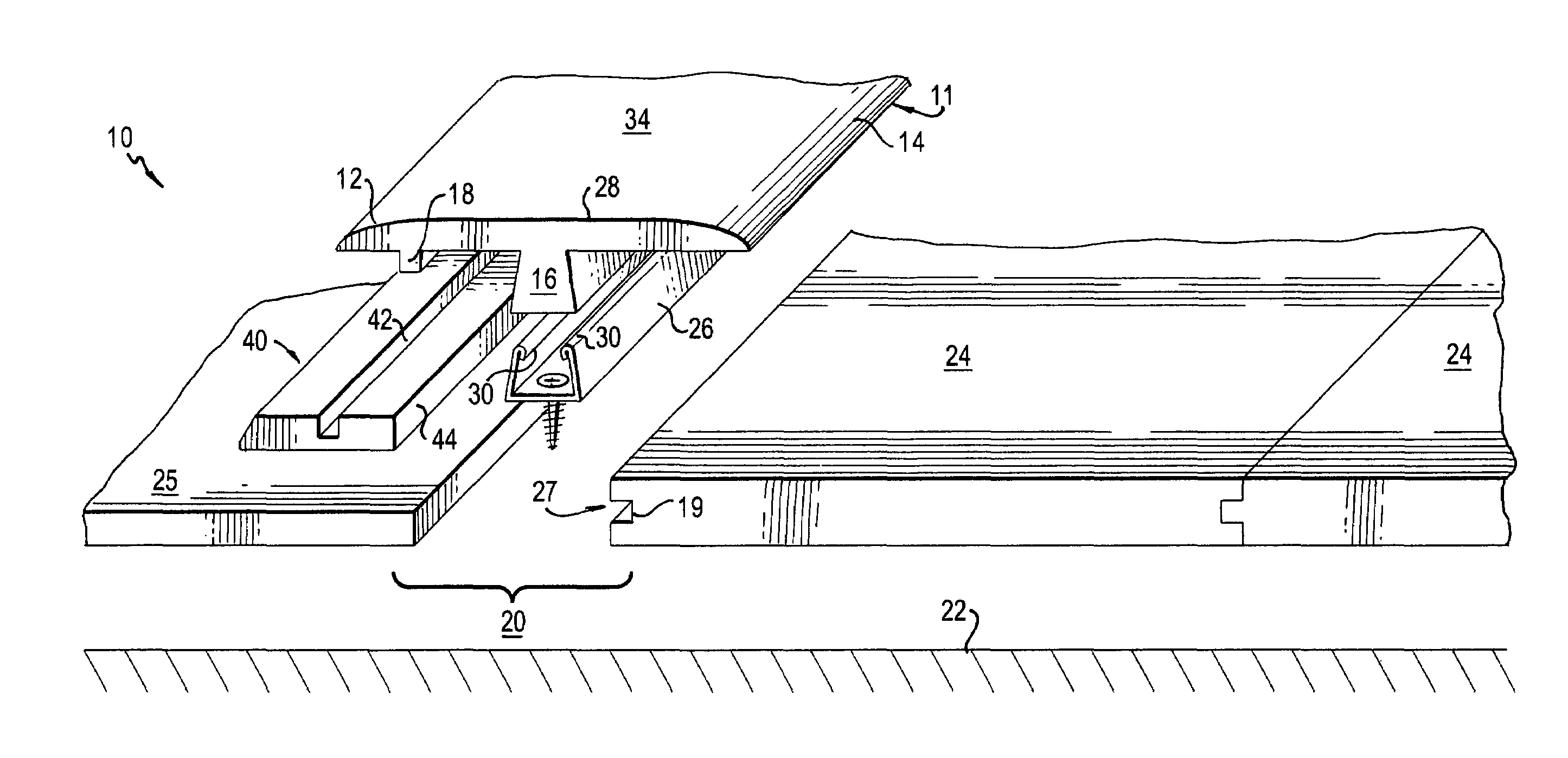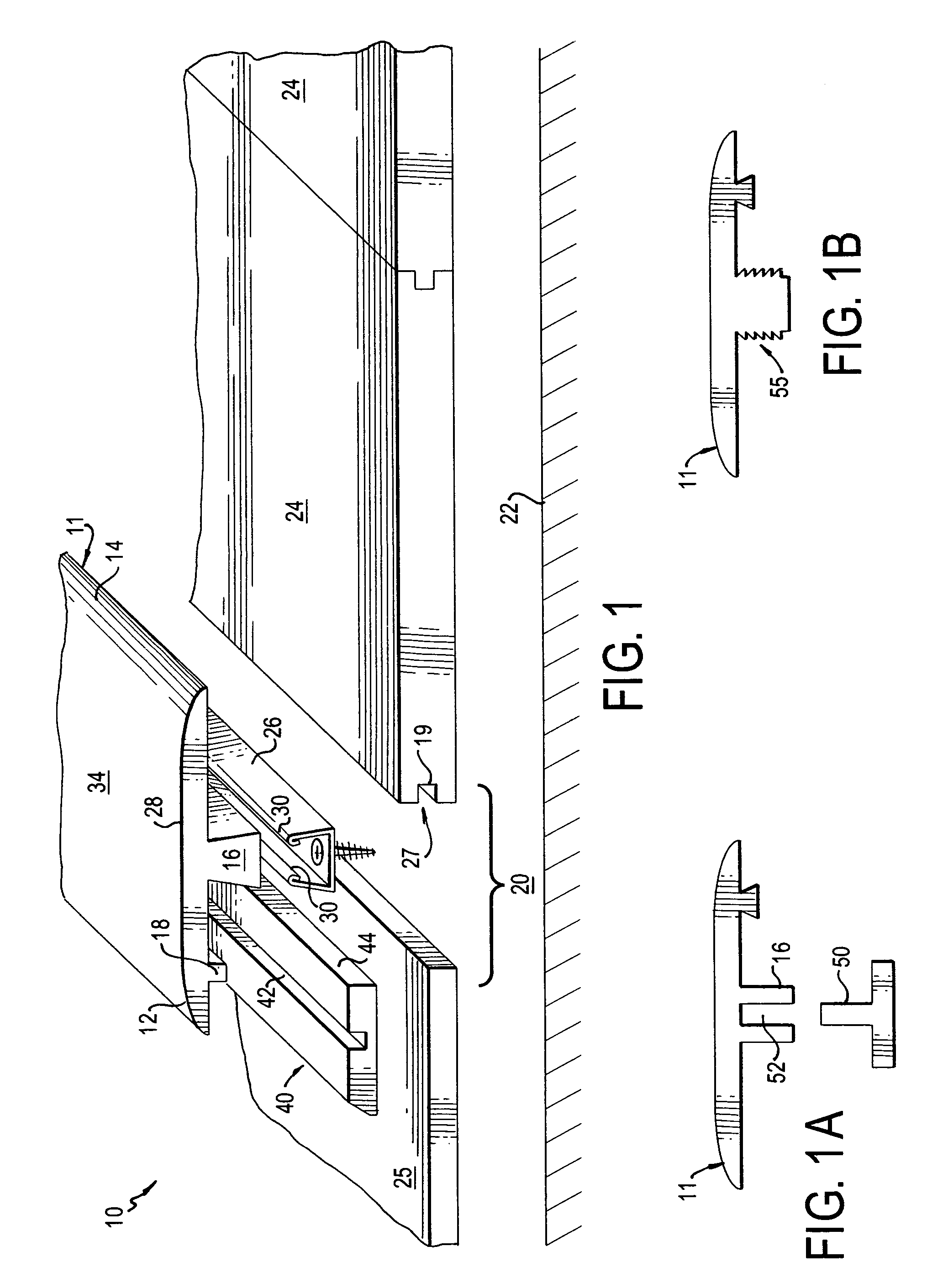Transition molding and installation methods therefor
a technology of transition molding and installation methods, which is applied in the direction of structural elements, building components, decorative arts, etc., can solve the problems of difficulty in covering the gap that may be formed, and the conventional edge molding is encountered
- Summary
- Abstract
- Description
- Claims
- Application Information
AI Technical Summary
Benefits of technology
Problems solved by technology
Method used
Image
Examples
Embodiment Construction
[0036]FIG. 1 shows an exploded view of the various parts of the inventive joint cover assembly 10. The assembly 10 includes a T-shaped molding 11, having a foot 16 formed so that it can fit in a gap 20 between adjacent floor elements 24, 25. FIG. 1 demonstrates a typical use, in which the gap 20 is formed adjacent an edge 27 of a floor element 24. Although FIG. 1 depicts all of the floor elements 24 to be conventional tongue-and-groove type floor panels (having a groove 27 positioned adjacent to the gap 20), this is merely one of any number of embodiments. For example, floor elements 24, 25 need not be the same type of floor element. Specifically, the floor elements 24 can be any type of flooring designed to be used as a floor or placed over a subfloor 22, e.g., tile, linoleum, laminate flooring, concrete slab, parquet, vinyl, turf, composite or hardwood. As is known, laminate floors are not attached to the subfloor 22, but are considered “floating floors.” Although the figures illu...
PUM
 Login to View More
Login to View More Abstract
Description
Claims
Application Information
 Login to View More
Login to View More - R&D
- Intellectual Property
- Life Sciences
- Materials
- Tech Scout
- Unparalleled Data Quality
- Higher Quality Content
- 60% Fewer Hallucinations
Browse by: Latest US Patents, China's latest patents, Technical Efficacy Thesaurus, Application Domain, Technology Topic, Popular Technical Reports.
© 2025 PatSnap. All rights reserved.Legal|Privacy policy|Modern Slavery Act Transparency Statement|Sitemap|About US| Contact US: help@patsnap.com



